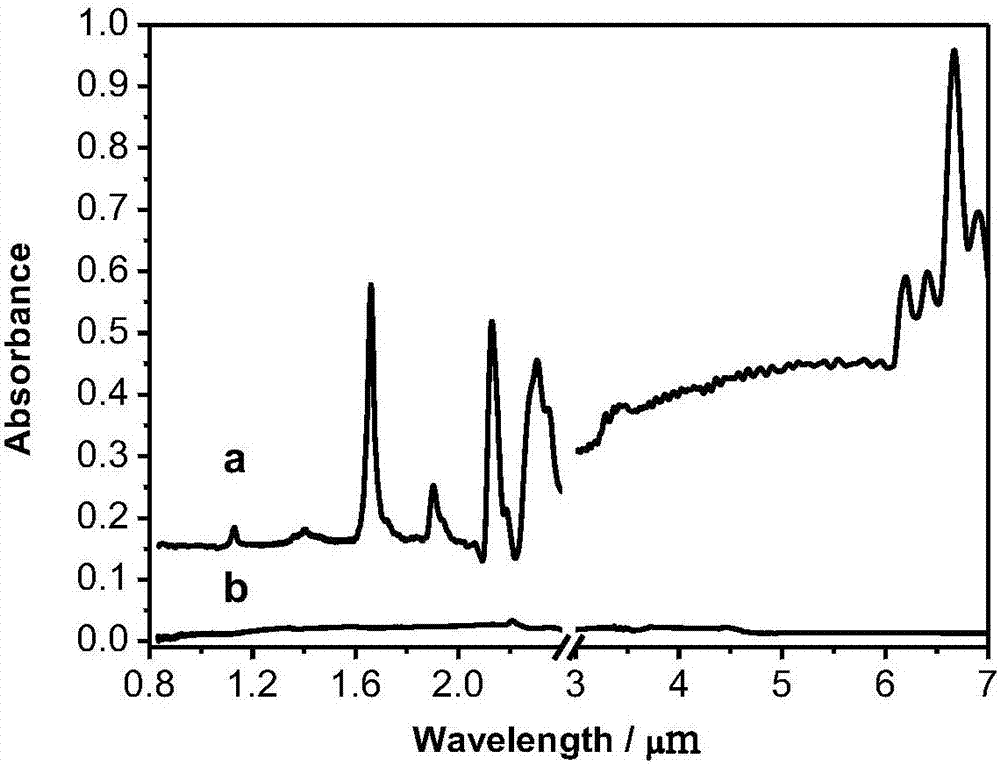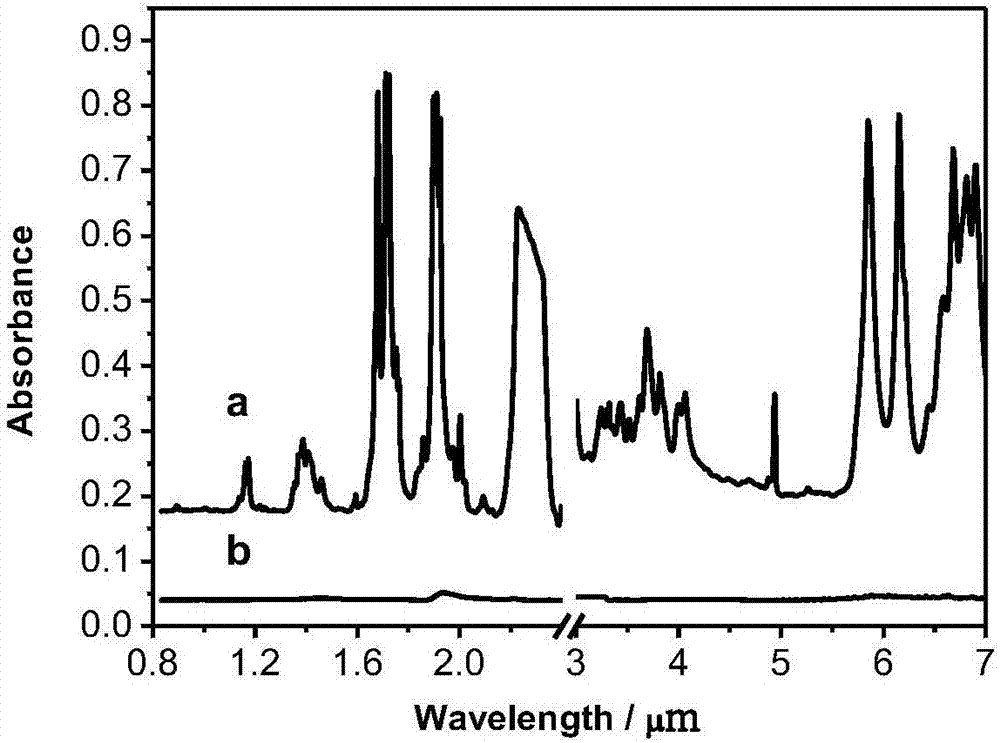Method for adopting ITO nano-material as surface enhanced substrate of infrared spectrum combined frequency area
A technology of infrared spectroscopy, nanomaterials, applied in nanotechnology for sensing, nanotechnology for materials and surface science, analytical materials, etc.
- Summary
- Abstract
- Description
- Claims
- Application Information
AI Technical Summary
Problems solved by technology
Method used
Image
Examples
Embodiment 1
[0040] Synthesis of plasmon resonance nanomaterial ITO in the combined frequency region of infrared spectroscopy, surface modification with acid red as probe molecule, and SENIR and SEIRAS detection by direct method and potassium bromide tablet method.
[0041] 1. Synthesis of plasmon resonance nanomaterial ITO in the combined frequency region of infrared spectrum:
[0042] (1) Weigh 0.249 g of indium acetylacetonate and 0.0261 g of tin chloride acetylacetonate with a balance.
[0043] (2) Put the above sample into a 50mL beaker, add 15mL of n-butanol to dissolve the sample, stir it evenly with a glass rod, and then ultrasonicate for 10 minutes.
[0044] (3) Use a graduated cylinder to measure 12 mL of the solution obtained in step (2) and put it into a reaction kettle, put the reaction kettle into a constant temperature oven and heat up to 200 ° C, continue heating for 48 hours, then place the reaction kettle at room temperature to cool, and the product Centrifugation gave a...
Embodiment 2
[0052] Synthesis of plasmon resonance nanomaterial ITO in the combined frequency region of infrared spectroscopy, surface modification with Sudan red as probe molecule, and direct method for SENIR and SEIRAS detection.
[0053] 1. Synthesis of plasmon resonance nanomaterial ITO in the combined frequency region of infrared spectrum:
[0054] (1) Weigh 0.249 g of indium acetylacetonate and 0.0261 g of tin chloride acetylacetonate with a balance.
[0055] (2) Put the above sample into a 50mL beaker, add 15mL of n-butanol to dissolve the sample, stir it evenly with a glass rod, and then ultrasonicate for 10 minutes.
[0056] (3) Use a graduated cylinder to measure 12 mL of the solution obtained in step (2) and put it into a reaction kettle, put the reaction kettle into a constant temperature oven and heat up to 200 ° C, continue heating for 48 hours, then place the reaction kettle at room temperature to cool, and the product Centrifugation gave a solid product.
[0057] (4) The ...
Embodiment 3
[0065] Synthesis of plasmonic resonance nanomaterial ITO in the combined frequency region of infrared spectroscopy, surface modification with p-mercaptopyridine as probe molecule, and SENIR and SEIRAS detection by direct method and potassium bromide tablet method.
[0066] 1. Synthesis of plasmon resonance nanomaterial ITO in the combined frequency region of infrared spectrum:
[0067] The method is the same as example 1.
[0068] 2. Surface modification using p-mercaptopyridine as probe molecule:
[0069] 10 μL of 10 -10 The ethanol solution of mol / L p-mercaptopyridine was added dropwise on 0.01 g of ITO nanoparticle powder, and then dried naturally to obtain the ITO nanoparticle powder with probe molecules modified on the surface.
[0070] 3. SENIR and SEIRAS detection by direct method and potassium bromide tablet method:
[0071] In the near-infrared region, the SENIR test can be performed directly, and in the mid-infrared region, the potassium bromide tablet method can ...
PUM
| Property | Measurement | Unit |
|---|---|---|
| Concentration | aaaaa | aaaaa |
Abstract
Description
Claims
Application Information
 Login to View More
Login to View More - R&D
- Intellectual Property
- Life Sciences
- Materials
- Tech Scout
- Unparalleled Data Quality
- Higher Quality Content
- 60% Fewer Hallucinations
Browse by: Latest US Patents, China's latest patents, Technical Efficacy Thesaurus, Application Domain, Technology Topic, Popular Technical Reports.
© 2025 PatSnap. All rights reserved.Legal|Privacy policy|Modern Slavery Act Transparency Statement|Sitemap|About US| Contact US: help@patsnap.com



